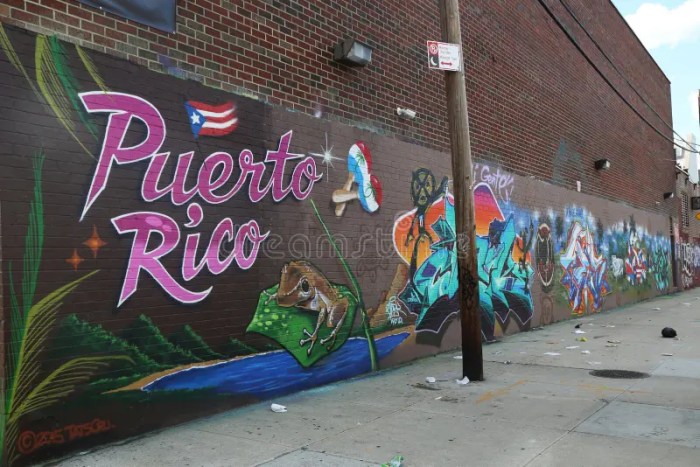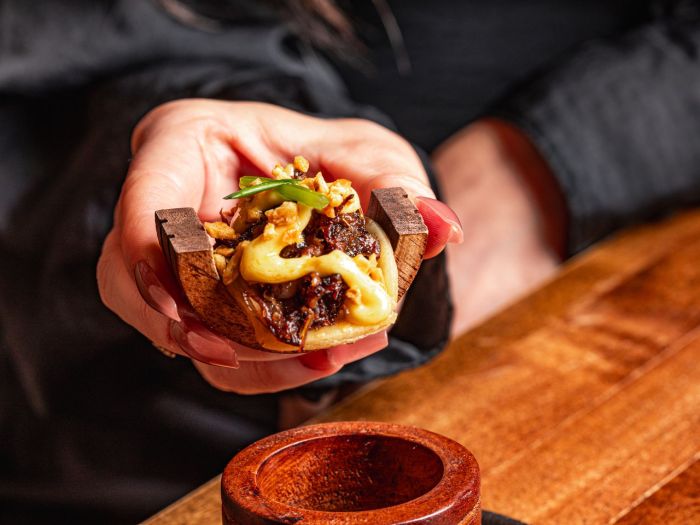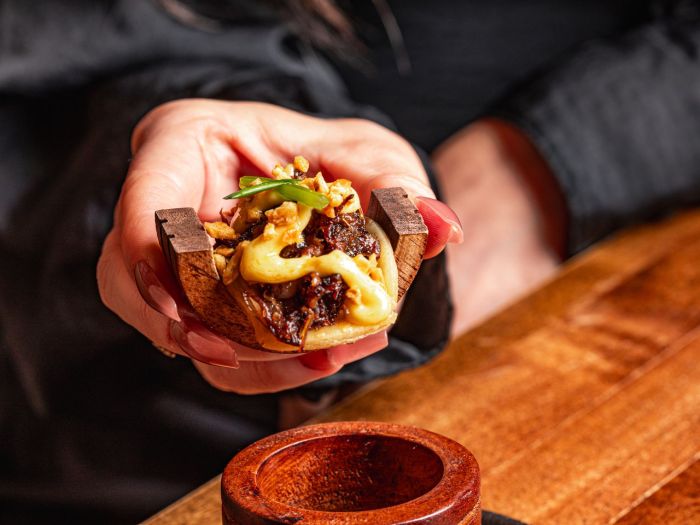Muralists art scene puerto rico bursts with vibrant colors and powerful stories. From historical depictions to contemporary commentary, these murals tell the island’s rich narrative. The art form isn’t just decoration; it’s a vital part of Puerto Rican culture, deeply interwoven with the island’s history, social fabric, and community spirit. This exploration delves into the evolution of this dynamic scene, highlighting key figures, impactful themes, and the enduring legacy of these artworks.
The vibrant murals of Puerto Rico, a testament to artistic expression, showcase the unique cultural identity of the island. The murals are more than just art; they are powerful statements reflecting the island’s history, social issues, and cultural pride. They serve as a canvas for social commentary, historical memory, and a celebration of the island’s rich heritage.
Overview of the Puerto Rican Muralist Art Scene
Puerto Rican muralism, a vibrant and evolving art form, reflects the island’s rich history, cultural identity, and social struggles. From the powerful political statements of the 1970s to the contemporary expressions of community pride, Puerto Rican murals have played a crucial role in shaping public spaces and fostering dialogue. This evolution mirrors the broader Latin American muralist movement while showcasing unique Puerto Rican perspectives.The artistic legacy of muralism in Puerto Rico is deeply intertwined with the island’s social and political context.
Artists have used murals to address issues of colonialism, poverty, and social injustice, creating powerful visual narratives that resonate with the community. These artistic expressions often serve as both historical documents and powerful tools for social commentary.
Historical Development of Muralism in Puerto Rico
Puerto Rican muralism, rooted in the broader Latin American tradition, has experienced distinct phases of development. Early influences came from the Mexican Muralist movement, with its focus on social realism and historical narratives. The 1970s saw a surge in political murals, often responding to the socio-political climate of the time. Later, styles diversified, encompassing more abstract and personal expressions alongside continued engagement with social issues.
The evolution showcases a dynamic response to the island’s ever-changing realities.
Styles and Themes in Puerto Rican Muralism
The styles and themes of Puerto Rican muralism have evolved significantly over time. Early works often drew inspiration from Mexican muralism, employing bold colors and large-scale figures to depict historical events and social struggles. Later, artists experimented with various styles, including figurative, abstract, and mixed-media approaches. Themes have broadened to encompass not only historical and political narratives but also personal experiences, cultural celebrations, and contemporary social issues, reflecting the island’s multifaceted identity.
Examples include depictions of indigenous history, struggles for independence, and contemporary social injustices, all rendered with varying stylistic choices.
Puerto Rico’s vibrant muralist art scene is absolutely incredible. The sheer energy and creativity of these artists is contagious, transforming walls into breathtaking canvases. For anyone planning a trip to experience this firsthand, a reliable weekender bag like the camptop weekender bag amazon is a must-have. It’ll keep your essentials organized and safe while you explore the bustling cityscapes and admire the murals.
The vivid colors and powerful messages of the murals will undoubtedly inspire you.
Defining Characteristics of Puerto Rican Muralism
Several characteristics define the distinctive style of Puerto Rican muralism. A strong emphasis on community engagement is evident in many works, often created in collaboration with local residents and organizations. This collaborative process fosters a sense of ownership and pride in the artwork, making it a significant part of the community’s identity. The use of vibrant colors and bold imagery is common, reflecting the island’s vibrant cultural heritage and artistic traditions.
Finally, the incorporation of local imagery and symbols frequently appears, lending a uniquely Puerto Rican flavor to the murals.
Comparison of Puerto Rican Muralism with Other Latin American Movements
| Characteristic | Puerto Rican Muralism | Mexican Muralism | Argentine Muralism |
|---|---|---|---|
| Primary Themes | Colonialism, social justice, cultural identity, contemporary issues | Mexican history, social revolution, agrarian issues | National identity, historical narratives, urban life |
| Artistic Style | Diverse, influenced by various styles (figurative, abstract, mixed-media), often incorporates local imagery | Social realism, large-scale figures, bold colors | More diverse range of styles, often incorporating urban themes, sometimes experimental |
| Community Engagement | High emphasis on community participation, murals as community projects | Generally present, but not always as prominent as in Puerto Rican examples | Varying levels of community involvement, depending on specific projects |
This table illustrates some key differences and similarities between Puerto Rican muralism and other notable Latin American muralist movements. It highlights the unique characteristics that define the Puerto Rican tradition while acknowledging the shared historical and cultural context.
Key Figures and Their Contributions
The vibrant Puerto Rican muralist scene boasts a rich history, shaped by a multitude of talented artists who have used their art to express cultural identity, social commentary, and historical narratives. Their contributions extend beyond mere aesthetics, becoming vital components of the island’s cultural landscape. These artists have not only adorned walls with their masterpieces but also actively participated in fostering a sense of community and pride.This section highlights some key figures in the Puerto Rican muralist movement, examining their unique styles and the impact they’ve had on the scene’s development.
Their works, often imbued with powerful messages, are not just decorative elements but potent vehicles for social and political dialogue.
Prominent Muralists and Their Styles
Puerto Rico has a plethora of artists who have made significant contributions to the muralist art scene. Their diverse styles and approaches have enriched the movement, reflecting the island’s multicultural heritage and artistic dynamism. These artists have not only produced visually striking pieces but have also actively engaged with the community and social issues.
- Rafael Tufiño, a prominent figure in the Puerto Rican muralist scene, is renowned for his powerful and emotive depictions of Puerto Rican history and culture. His murals often feature vibrant colors and bold imagery, capturing the essence of the island’s rich heritage. A notable example is “El Grito de Lares,” a mural that commemorates the 1868 rebellion against Spanish colonial rule.
Puerto Rico’s vibrant muralists art scene is seriously impressive, bursting with color and creativity. Thinking about the bold, dynamic artwork, it got me pondering similar artistic bursts of energy found on the iconic Highway 395 road trip through California. Highway 395 road trip California offers a totally different perspective on the power of art in public spaces, though the passion for expressing oneself visually is undeniably similar.
Back in Puerto Rico, I’m inspired by the muralists’ dedication to their craft and the unique artistic voice of their island.
This piece stands as a testament to his ability to use art as a tool to chronicle and celebrate significant historical events.
- Jorge “El Gordo” Torres, a muralist known for his expressive style, is another important figure. His work often blends figurative representations with bold graphic elements. His murals serve as a powerful commentary on social and political issues, with works such as “El Pueblo Unido Jamas Sera Vencido” vividly conveying the strength and resilience of the community.
- Luis “Pacho” Rodríguez is a skilled muralist whose works demonstrate a masterful understanding of color and composition. His pieces frequently feature intricate patterns and symbolic imagery, reflecting the cultural tapestry of Puerto Rico. “La Borinqueña,” for example, a mural celebrating the spirit of Puerto Rican women, displays his technical proficiency and ability to create captivating visual narratives.
Key Works and Themes
The following table highlights some notable works by these muralists, showcasing the themes and messages they convey:
| Artist | Key Work | Themes/Messages |
|---|---|---|
| Rafael Tufiño | “El Grito de Lares” | Puerto Rican history, resilience, and the fight against colonialism. |
| Jorge “El Gordo” Torres | “El Pueblo Unido Jamas Sera Vencido” | Community unity, social justice, and resistance. |
| Luis “Pacho” Rodríguez | “La Borinqueña” | Celebration of Puerto Rican women, cultural identity, and empowerment. |
Themes and Messages in the Art: Muralists Art Scene Puerto Rico
Puerto Rican murals are more than just vibrant displays of color; they are powerful narratives that reflect the island’s complex history, social struggles, and cultural identity. These artworks often serve as a visual testament to the resilience of the people, expressing their hopes, dreams, and collective memory. They are a potent form of community engagement, fostering dialogue and fostering a sense of shared experience.These murals, often located in public spaces, act as a constant reminder of the island’s past and present, engaging viewers in a conversation about social justice, cultural pride, and political activism.
They provide a platform for artists to voice concerns and inspire action.
Common Themes Depicted
Puerto Rican murals frequently explore a wide range of themes, deeply rooted in the island’s socio-political context. These themes offer a unique perspective on the experiences of the Puerto Rican people. Common threads weave through the art, showcasing the diverse aspects of their history and identity.
- Social Justice and Activism: Murals often depict powerful images of social justice struggles, highlighting themes of inequality, discrimination, and the fight for human rights. These portrayals frequently address issues like poverty, inequality, and the struggle for political autonomy. For example, a mural might depict a group of people protesting against social injustice or highlight a historical figure who fought for social change.
- Cultural Pride and Identity: The murals frequently celebrate Puerto Rican culture, history, and traditions. They showcase the rich tapestry of the island’s heritage, reflecting its indigenous roots, Spanish colonial influences, and African diaspora. These works often feature symbolic imagery representing the island’s distinct identity and cultural pride. A mural might showcase traditional dances, musical instruments, or significant historical figures, reinforcing the cultural identity of the island.
- Political Activism and Self-Determination: Many murals explicitly address political issues, advocating for greater autonomy and independence from outside powers. These works often depict historical events related to the struggle for self-determination and the quest for political liberation. They can include symbols of resistance, protests, and figures who have fought for political change.
Socio-Political and Cultural Influences
The socio-political climate of Puerto Rico profoundly shapes the themes and messages conveyed in the murals. Historical events, political struggles, and cultural influences are woven into the very fabric of the artwork.
- Historical Context: The historical context, including colonization, economic hardship, and political movements, provides the foundation for the messages within the murals. These artworks frequently draw upon historical events, personalities, and social struggles to convey a message of resilience and resistance.
- Cultural Influences: The cultural richness of Puerto Rico is evident in the artwork. The fusion of indigenous, African, and European influences is prominently displayed through the imagery, symbolism, and aesthetic choices. These influences create a unique visual language that resonates with the cultural heritage of the island.
- Social Commentary: Murals act as a form of social commentary, highlighting the realities faced by the Puerto Rican people. They provide a platform for artists to address social issues, including poverty, inequality, and lack of access to resources.
Role of Art in Expressing Identity and Cultural Pride
Art plays a crucial role in fostering a sense of shared identity and cultural pride within the Puerto Rican community. These murals serve as a powerful medium for expression, allowing artists to celebrate their heritage and history.
- Shared Identity: Murals often serve as a visual representation of a shared cultural identity, creating a sense of belonging and community. They help to connect individuals to a broader narrative, emphasizing their collective heritage.
- Cultural Pride: By celebrating the diverse elements of Puerto Rican culture, murals foster a sense of cultural pride and self-esteem. They showcase the richness and vibrancy of the island’s heritage, inspiring a sense of belonging and shared experience.
Categorizing Themes, Muralists art scene puerto rico
| Theme | Description | Example Murals |
|---|---|---|
| Social Justice | Portrayals of inequality, discrimination, and the fight for human rights. | Murals depicting historical figures who fought for civil rights or current social injustices |
| Cultural Pride | Celebration of Puerto Rican culture, history, and traditions. | Murals featuring traditional dances, musical instruments, or significant historical figures |
| Political Activism | Advocacy for greater autonomy and independence. | Murals with symbols of resistance, protests, and figures who fought for political change |
Locations and Public Spaces
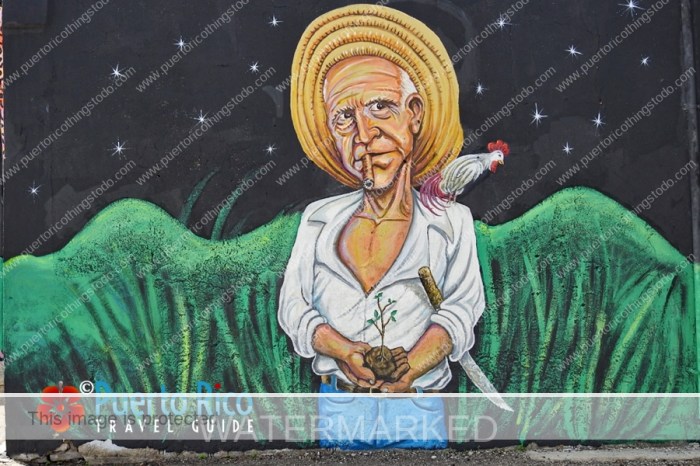
Puerto Rican murals aren’t confined to galleries or private collections; they are vibrant expressions of the island’s spirit, found prominently in public spaces. These artworks serve as powerful visual narratives, reflecting the community’s history, struggles, and aspirations. The choice of location is crucial, as it amplifies the message and fosters a dialogue between artist and community. Public spaces become canvases for social commentary and artistic innovation, offering a unique platform for artists to connect with a wider audience.Public spaces in Puerto Rico, from bustling city streets to tranquil plazas, provide fertile ground for muralists to showcase their talent and engage with the community.
The murals’ presence transforms these areas, turning them into living museums, and often catalysts for civic pride and community engagement.
Locations Known for Murals
The island’s diverse landscape is dotted with locations that have become known for their concentration of vibrant murals. These locations, often chosen for their visibility and accessibility, serve as powerful visual statements. Community involvement is frequently a key component in mural projects, further solidifying the connection between art and community.
| Location | Description | Artist(s) |
|---|---|---|
| Old San Juan, specifically Calle Fortaleza | This historic district, with its cobblestone streets and colonial architecture, provides a backdrop for murals that tell stories of Puerto Rico’s past and present. The concentrated presence of murals in this area creates a vibrant and artistic atmosphere, drawing visitors and residents alike. | Various local and international artists |
| Santurce, specifically the areas surrounding the urban center | Known for its diverse population and rich artistic scene, Santurce is a hub for mural art. The vibrant murals here often depict themes of community, identity, and social justice, reflecting the neighborhood’s dynamic energy. These murals frequently feature prominent figures in Puerto Rican history and culture. | Various local and international artists |
| Cataño | This coastal town is known for its beautiful beaches and relaxed atmosphere, but also for the strong artistic community. The murals in Cataño often feature themes of the sea, nature, and local history. The murals frequently blend with the natural beauty of the area. | Various local and international artists |
| Culebra | This island’s stunning beaches and tranquil environment offer a unique setting for murals that emphasize the beauty of nature. The murals in this location are often connected to the local culture and the natural environment. | Various local and international artists |
Significance of Public Spaces as Platforms
Public spaces are more than just areas for walking or recreation; they are crucial platforms for artistic expression. Murals in public spaces serve as powerful visual statements that can communicate social commentary, historical narratives, and cultural identity. The visibility of these works makes them accessible to a broad audience, fostering dialogue and engagement within the community. These spaces become dynamic canvases for artists to express themselves, and for the public to connect with art in a meaningful way.
Community Engagement in Mural Creation
Community engagement is vital in the creation of successful murals. Involving local residents, artists, and community organizations ensures that the murals reflect the values and aspirations of the community. Collaboration between artists and residents allows for a shared understanding of the community’s identity and history, enriching the artistic narrative. The resulting murals become living expressions of the collective spirit.
The process of creating murals can foster a sense of belonging and pride within the community, as residents feel actively involved in the artistic process.
Materials and Techniques
Puerto Rican muralists, drawing inspiration from the vibrant culture and history of the island, utilize a diverse range of materials and techniques to bring their powerful messages to life. This artistic expression, deeply rooted in the local context, showcases a unique approach to mural creation, reflecting the island’s artistic heritage and its rich social fabric. The choices made in materials and techniques play a crucial role in conveying the intended meaning and emotional impact of the artwork.The materials employed by Puerto Rican muralists are often readily available and locally sourced, demonstrating a commitment to sustainability and community involvement.
Puerto Rico’s vibrant muralist art scene is truly something special. The colorful street art is a feast for the eyes, showcasing local talent and stories. While you’re exploring the island’s artistic gems, you might want to check out some great deals on hotels, like the Hyatt Summer Lock Sale, to help you plan your trip. hyatt summer lock sale could save you money on your stay.
Ultimately, the muralists’ art scene continues to captivate visitors and residents alike, adding another layer of beauty and culture to the island.
These choices frequently contribute to the murals’ aesthetic qualities, allowing artists to explore textures, colors, and finishes in unique and innovative ways. Techniques vary significantly, from traditional fresco methods to contemporary approaches using acrylics or spray paint, each method contributing to the overall impact of the artwork.
Common Materials
The diverse landscape of Puerto Rico has influenced the range of materials used in murals. Artists often leverage readily available resources, including natural pigments derived from local flora and fauna, and even recycled materials. These sustainable practices are common, reflecting a dedication to both artistic expression and environmental consciousness. Cement, plaster, and various types of paints are also frequently employed, depending on the specific project and artistic vision.
Techniques Employed
Puerto Rican muralists employ a wide array of techniques, ranging from traditional fresco painting, which involves applying pigments to wet plaster, to more contemporary methods using acrylics, spray paint, and stencils. The selection of a technique often depends on the mural’s scale, the desired aesthetic effect, and the artist’s personal preference. The choice also influences the mural’s longevity and resilience to environmental factors.
Impact on Aesthetic Qualities
The materials and techniques employed directly influence the aesthetic qualities of the murals. The use of natural pigments can create a unique earthy palette, while the application of spray paint can result in a vibrant and dynamic effect. The texture achieved through different techniques adds depth and dimension to the artwork, allowing artists to explore diverse visual languages.
For example, the layering of colors in a mural using stencils creates intricate patterns, adding a visual richness to the composition.
Comparison of Painting Techniques
| Artist | Technique | Materials | Aesthetic Impact |
|---|---|---|---|
| Artist A | Fresco | Pigments on wet plaster | Creates a smooth, timeless aesthetic; emphasizes the permanence of the message. |
| Artist B | Acrylic on canvas | Acrylic paints, canvas | Offers versatility in color and application; allows for detailed compositions. |
| Artist C | Spray paint on wall | Spray paint, stencils | Creates a dynamic, energetic style; allows for rapid execution of large-scale murals. |
| Artist D | Mixed media (natural pigments, cement) | Natural pigments, cement | Emphasizes the local and natural elements of Puerto Rico; creates a unique texture and visual identity. |
Contemporary Trends and Influences
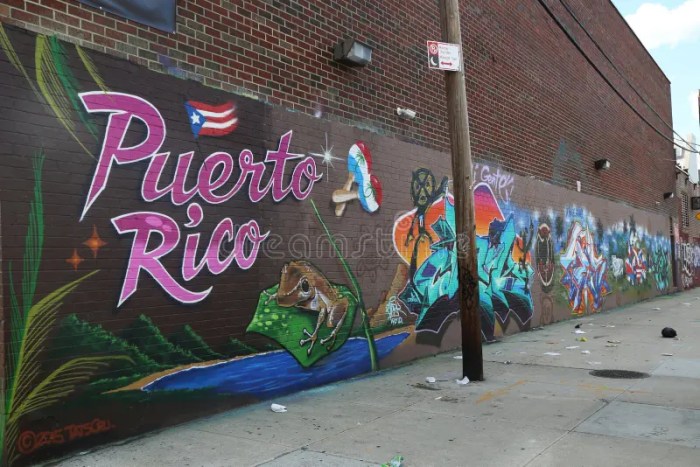
The vibrant Puerto Rican muralist scene continues to evolve, embracing new aesthetics and themes while retaining its powerful historical roots. Contemporary artists are drawing inspiration from a multitude of sources, including global art movements and local cultural expressions, resulting in a diverse and dynamic visual language. This fusion of influences creates a rich tapestry of artistic voices, adding layers of meaning and perspective to the murals that grace the islands’ public spaces.Contemporary Puerto Rican muralism reflects a growing emphasis on social commentary and personal narratives.
Artists are using their art to address contemporary issues, such as social justice, environmental concerns, and political activism. This evolution builds on the historical themes of identity, resilience, and community, adding a contemporary lens to these fundamental concepts.
Contemporary Artists and Approaches
Puerto Rican muralists are increasingly pushing boundaries and experimenting with new styles. Emerging artists are demonstrating a remarkable diversity in their approaches, showcasing a range of influences from street art to traditional mural painting techniques. This variety contributes to a richer artistic landscape, enriching the aesthetic and conceptual aspects of the murals. A notable example is the work of [Artist Name], who incorporates elements of abstract expressionism and vibrant color palettes to create powerful statements on social issues within the community.
Influence of Other Art Forms and Movements
The influence of other art forms and movements is undeniable. Street art, with its bold imagery and direct communication, is evident in many contemporary murals. Furthermore, the use of digital art techniques and mixed media is becoming increasingly prevalent, adding a new layer of complexity to the traditional muralist’s palette. This is not a mere imitation, but a synthesis of influences that results in unique visual statements.
Comparison to Earlier Periods
While the core themes of identity and community remain central, contemporary murals showcase a broader range of perspectives and subject matter. The historical focus on the struggle for independence and cultural preservation continues to resonate, but contemporary artists are now including themes of environmentalism, social justice, and LGBTQ+ rights. This expansion of themes reflects a broader societal awareness and engagement with critical issues.
Modern Techniques in Recent Murals
Contemporary murals often incorporate innovative techniques. The use of stencils and spray paint is still prevalent, providing a quick and impactful way to cover large surfaces. However, artists are also utilizing mixed media approaches, including acrylics, oils, and even digital elements integrated into the physical mural. This fusion of traditional and modern techniques results in a unique and dynamic visual experience.
For instance, murals might incorporate elements of graphic design, typography, and even video projections, showcasing a remarkable evolution in materials and execution.
Impact and Legacy
Puerto Rican muralism isn’t just a visual art form; it’s a powerful expression of the island’s history, culture, and aspirations. From vibrant depictions of everyday life to poignant commentaries on social issues, these murals have deeply woven themselves into the fabric of Puerto Rican society. Their impact extends beyond aesthetics, influencing community identity and fostering a sense of collective pride.The murals act as a living history book, chronicling struggles, triumphs, and the enduring spirit of the people.
They’re more than just paintings; they’re a testament to the resilience and creativity that defines Puerto Rican culture.
Impact on Puerto Rican Society
Muralism has significantly shaped the social landscape of Puerto Rico. It provides a platform for diverse voices and perspectives, allowing artists to express their experiences and perspectives in a public forum. These artworks frequently tackle social and political issues, often acting as a catalyst for dialogue and reflection. The murals’ visibility within public spaces ensures that these discussions reach a wide audience, prompting engagement and promoting social change.
Contribution to Cultural Landscape
Murals are an integral part of Puerto Rico’s cultural landscape, serving as both a historical record and a reflection of contemporary life. They enrich public spaces, transforming them into vibrant canvases for artistic expression and community engagement. These murals, often featuring symbolic imagery and narratives, embody a deep-seated connection to the island’s history, identity, and cultural heritage.
Examples of Education and Community Building
Murals often incorporate educational elements, serving as interactive learning tools for communities. For example, historical murals can teach about significant events and figures, while environmental murals can raise awareness about ecological issues. Moreover, collaborative mural projects foster community spirit and pride by bringing residents together in a shared creative endeavor. The act of participating in the creation of a mural strengthens community bonds, encouraging collective ownership and pride in the space.
Enduring Legacy
The legacy of muralism in Puerto Rico is profound and enduring. The movement’s ability to connect art with social issues has left an indelible mark on the island’s identity. These works transcend mere aesthetics; they embody the island’s struggles, aspirations, and artistic talent. The murals serve as a powerful visual testament to the resilience and creativity of the Puerto Rican people.
Influence on Different Demographics and Communities
| Demographic/Community | Influence of Murals |
|---|---|
| Youth | Murals can serve as a source of inspiration and artistic expression, fostering a sense of belonging and encouraging creativity. They can also promote awareness of historical events and social issues, leading to informed discussions and action. |
| Immigrants | Murals can offer a sense of familiarity and cultural connection in new environments. They can portray narratives of migration and resilience, offering a visual representation of their experiences and aspirations. |
| Elderly | Murals can connect the elderly to their heritage and the history of their communities. They offer a way to share stories and preserve memories, fostering a sense of continuity and belonging. |
| General Public | Murals serve as a visual narrative for the general public, offering a deeper understanding of Puerto Rican history, culture, and social issues. They act as a common ground for diverse communities, promoting dialogue and understanding. |
Conclusion
In conclusion, the muralists art scene puerto rico is a captivating tapestry woven with history, community, and powerful visual storytelling. From the historical figures who pioneered the movement to the contemporary artists pushing boundaries, these artworks serve as a vibrant expression of Puerto Rican identity. The murals are not just decorations; they are an integral part of the cultural landscape, communicating narratives, fostering community, and preserving history.
They stand as a testament to the power of art to unite and inspire.
